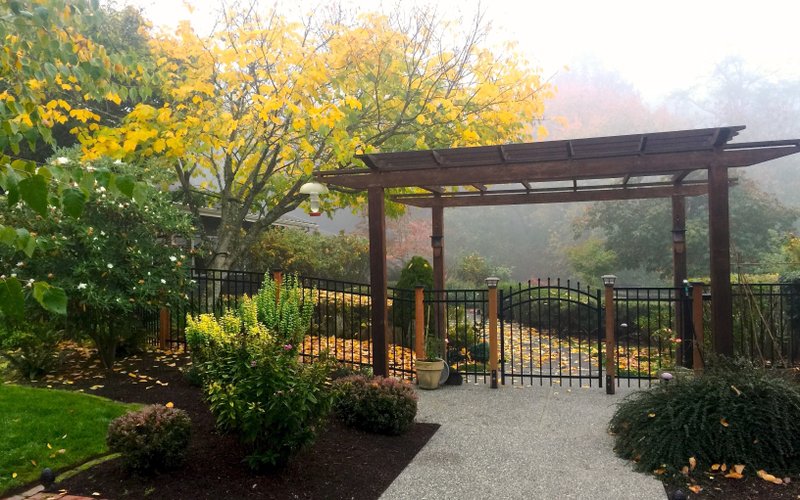Pergolas have been part of home gardens for a long time, but they're getting some modern upgrades because of trends toward backyard sanctuaries and entertaining.
Historically, pergolas were simple, overhead structures used to protect garden walkways. They were characterized by long linear shapes, said Gail Hansen, an associate professor and Extension specialist in landscape design with the University of Florida.
Today, pergolas are customized for use covering outdoor patios and elaborate entertainment areas.
"Many homeowners like to spend more time outdoors, and the relaxed ease of outdoor entertaining is more suited to our lifestyle and less formal entertainment activities," Hansen said.
Backyard pergolas are usually attached to houses or, if they're freestanding, are near indoor kitchens for easy access, she said.
"Homeowners are updating their outdoor entertainment areas with fully appointed kitchens and luxurious patio furniture," Hansen said.
"In addition to the traditional gas grill, nearly every kitchen appliance has been modified for outdoor use," including sinks, refrigerators, wine coolers, griddles, ice makers, pizza ovens and warming drawers, she said.
"Stainless steel is the preferred material."
Pergolas sometimes are confused with arbors, which often are arch-shaped, with a continuous run of latticework from side to side, said Missy Henriksen, vice president of public affairs for the National Association of Landscape Professionals.
"Traditionally, arbors shade gates, walkways or a bench, are only a few feet wide and provide the perfect support for climbing plants," she said.
Both landscape-design structures support climbing plants, she said, but pergolas are more elaborate and help shade entire outdoor spaces.
When designed and oriented correctly, a pergola can cast enough shade to make even a hot afternoon enjoyable, or if homeowners need additional protection from the elements, they can install a retractable shade, Henriksen said.
"The increase we are seeing in homeowners' requests for pergolas is another example of how people are investing in their outdoor living spaces to create 'staycation sanctuaries,' add sizzle to outdoor entertaining and personalize their individual home environments," she said.
You can tailor your pergola with everything from chandeliers and ceiling fans to strings of lights, fabric, space heaters and sound systems.
"Add color and excitement to an outdoor space with thriller, filler and spiller container gardens," Henriksen said. "With the perfect planting combination and unique container, homeowners can add rich color and texture to a stunning pergola."

Landscape professionals can help you understand the pros and cons of different materials used for pergolas. Options include pressure-treated woods, cedar wood, vinyl and fiberglass, Henriksen said.
Pressure-treated wood generally looks best if it's painted or stained, she said. Cedar is insect-resistant and looks great right from the sawmill. "You can leave it untreated to turn a soft silver gray, or stain and seal it to hold its color," she said.
Vinyl requires little maintenance while fiberglass can be painted, spans longer distances without posts and, due to its light weight, doesn't require the same deep footers that other materials dictate, Henriksen said.
For more about pergolas and other garden structures, see this fact sheet from the University of Florida's Institute of Food and Agricultural Sciences: https://edis.ifas.ufl.edu/pdffiles/EP/EP43200.pdf
You can contact Dean Fosdick at deanfosdicknetscape.net
HomeStyle on 04/13/2019
